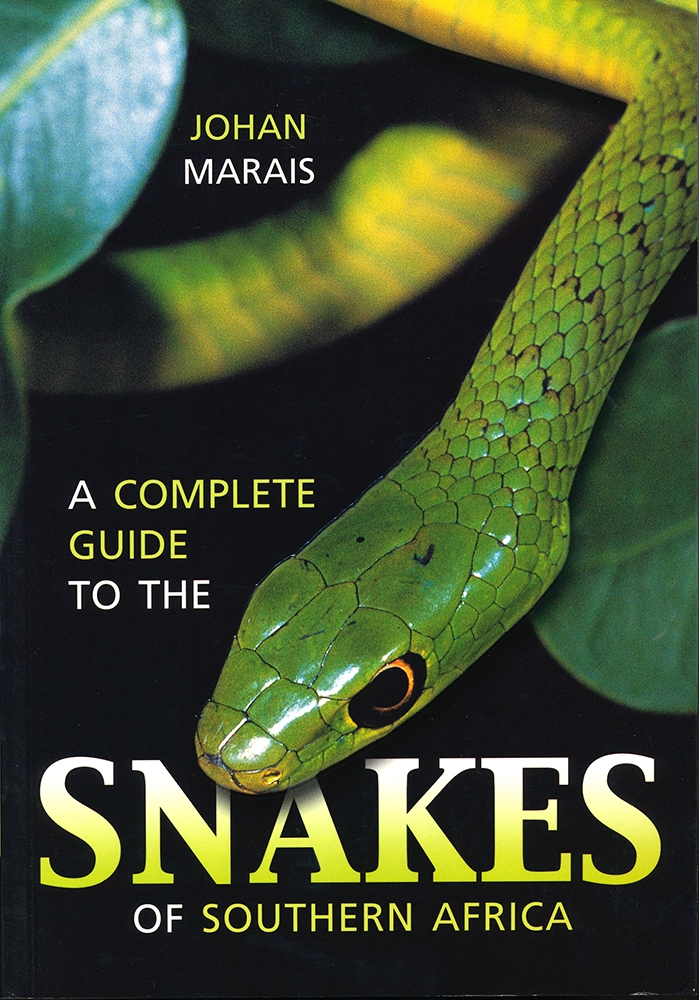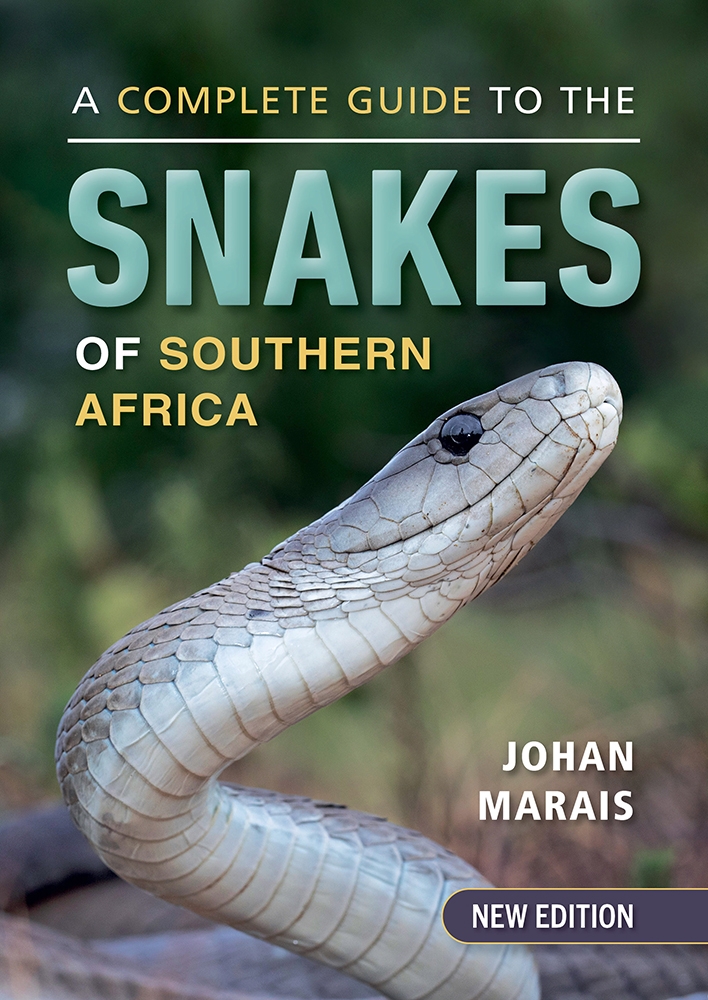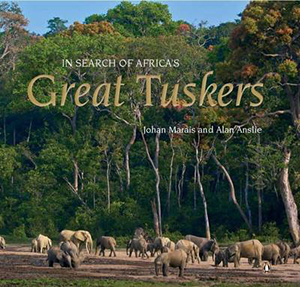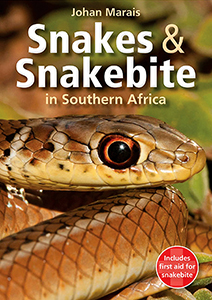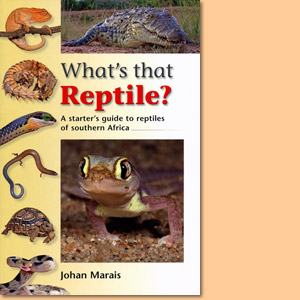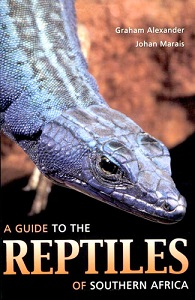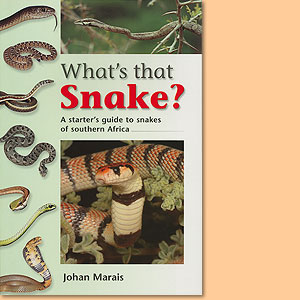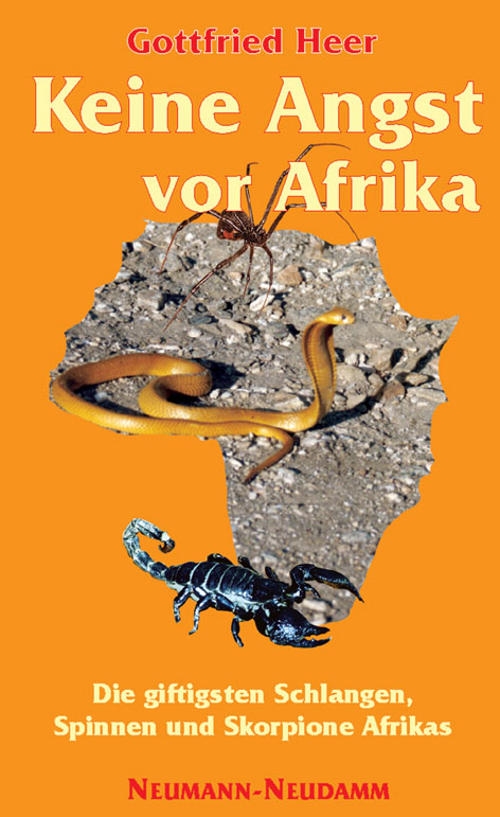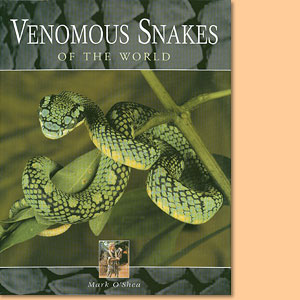A Complete Guide to the Snakes of Southern Africa (2nd edtion 2004), by Johan Marais
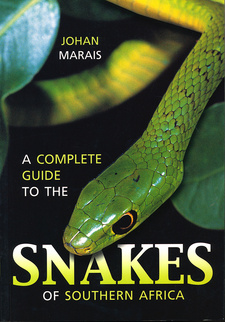
A Complete Guide to the Snakes of Southern Africa, by Johan Marais. Penguin Random House South Africa, Struik Nature. 2nd edition. Cape Town, South Africa 2004. ISBN 9781868729326 / ISBN 978-1-86872-932-6
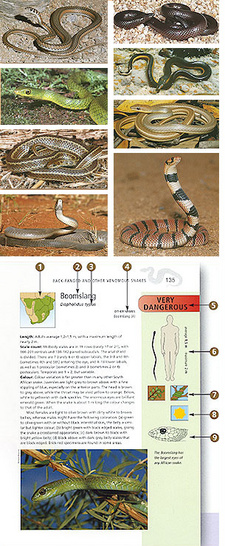
The aim of A Complete Guide to the Snakes of Southern Africa is to assist in identifying southern Africa's diverse range of snakes.
The aim of A Complete Guide to the Snakes of Southern Africa (2nd edtion 2004) is not only to assist in identifying southern Africa's diverse range of snakes, but also to give the layperson, including snake enthusiasts, a fresh understanding and appreciation of these fascinating creatures.
There are 170-odd species and subspecies of snakes in southern Africa, many of which are insufficiently studied and poorly understood. The response to A Complete Guide to the Snakes of Southern Africa, which was first published in 1992, was overwhelmingly positive and evoked many helpful comments. This new edition has been revised in the light of such comments and the many queries and suggestions I have received. The text has been updated and includes accounts of at least 11 new species and subspecies, while more than 30 species and subspecies have been reassigned. Snakes such as the Red Adder (Bitis rubida}, the Albany Adder (Bitis albanica) and the Southern Adder (Bitis armata) were described fairly recently, while others such as the Vine or Twig Snakes of the genus Thelotornis have been reallocated. With the rapid advance of herpetology in southern Africa, new distributional data has also come to light. Herpetologists now have greater contact with colleagues worldwide and more research is being conducted than before, both locally and by overseas researchers. In addition, new techniques in DNA analysis are proving to be extremely helpful, especially in the field of taxonomy. As much additional information as possible has been included in the species accounts that relates to behaviour, natural history, reproduction and snake venoms. Colour photographs now accompany the species descriptions and this, together with the simple icons that make essential information readily available at a glance, will, I hope, enhance the guide and make it even more user-friendly. [...]
How to use A Complete Guide to the Snakes of Southern Africa (2nd edtion 2004):
Photographs accompany most species, including as far as possible any variant colour forms or subspecies. To limit confusion, photographs of similar or easily confused species are also featured along with the snake under discussion. To facilitate identification, each species account is split up into several headings and is accompanied by a series of icons (explained below). A separate 'Look out for' box highlights each snake's most prominent features for quick identification. Essential technical terms are explained in the glossary on page 301.
1. Locator map: Each species is accompanied by a distribution map. The distributions on these maps reflect the areas in which the snakes may be found, rather than being derived from general museum records, which are not always comprehensive. This is merely a precautionary approach, as in several regions little museum collecting has been done, although certain species of snakes are known to live there. For more precise distribution information, readers are referred to the various museums that house herpetological collections as well as Fitzsimons' Snakes of Southern Africa (see bibliography).
2. Common name: The common name is given at the start of each species account. The same snake may have several common names, and names may also vary from one area to another. Any comments regarding common names will be welcomed and can be e-mailed to johan@inkbooks.com.
3. Scientific name: The scientific name is provided for each species. This usually consists of two parts, the first indicating the genus to which the snake belongs, the second giving the actual species name. If there are three names, the third name indicates that the snake under discussion is a subspecies or subgroup of a particular species.
4. Other names: Where available Afrikaans, Zulu and Xhosa names have also been included.
This is an extract from: A Complete Guide to the Snakes of Southern Africa
Title: A Complete Guide to the Snakes of Southern Africa
Author: Johan Marais
Publisher: Penguin Random House South Africa
Imprint: Struik Nature
2nd edition. Cape Town, South Africa 2004
ISBN 9781868729326 / ISBN 978-1-86872-932-6
Softcover, 17 x 24 cm, 312 pages, throughout colour photos
Marais, Johan im Namibiana-Buchangebot
A Complete Guide to the Snakes of Southern Africa (2nd edtion 2004)
The complete guide covers all essential aspects of snake biology and behaviour to 151 snakes of southern Africa. This 2nd edtion 2004 is on special offer.
A Complete Guide to the Snakes of Southern Africa
A Complete Guide to the Snakes of Southern Africa: this is updated and expanded 3rd edition / 2022.
In search of Africa's Great Tuskers
In Search of Africa's Great Tuskers we travels to some of the most remote and beautiful African landscapes to meet the legendary 'hundred-pounders' bull elephants.
Snakes & snakebite in Southern Africa
This guide is an uncomplicated approach to snakes and snakebites in Southern Africa, the emphasis is on identification, and on first aid treatment of snakebites.
What's that Reptile? A starter's guide to reptils of southern Africa
What’s that? series introduces starters to the diverse reptile fauna of southern Africa, including its snakes, lizards, crocodiles, tortoises, terrapins and turtles.
A Guide to the Reptiles of Southern Africa
A Guide to the Reptiles of Southern Africa introduces the 517 species currently described in the region, arranged into three main groups - snakes and lizards, crocodiles, and shelled reptiles.
What’s that Snake? A starter’s guide to snakes of southern Africa
What’s that snake is a good starter’s guide to identification of most common snakes of southern Africa.
Weitere Buchempfehlungen
Keine Angst vor Afrika
Ein reich bebilderter Notfallratgeber bei Schlangen- und Spinnenbissen für Touristen und Tourguides
Save me from the Lion's Mouth: Exposing Human-Wildlife Conflict in Africa
Save Me From the Lion's Mouth investigates the increasing conflict between people and wildlife in Africa.
Venomous Snakes of the World
Extremely accessible book, suitable for professional snake handlers and armchair herpetologists alike

